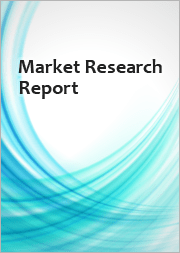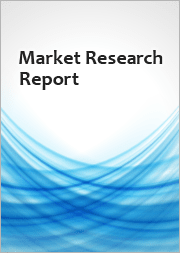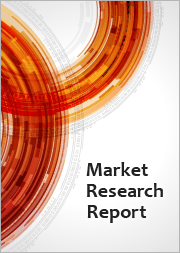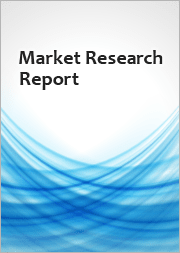
|
시장보고서
상품코드
1518783
세계의 아크릴 폴리머 시장(2024-2031년)Global Acrylic Polymer Market 2024-2031 |
||||||
아크릴 폴리머 시장은 예측 기간(2024-2031년)에 복합 연간 성장률(CAGR) 6.1%로 성장할 것으로 예측됩니다. 아크릴 폴리머 시장은 아크릴산 또는 그 유도체로 만들어진 합성 재료인 아크릴 폴리머의 생산, 유통, 거래를 다룬다. 이러한 다목적 재료는 페인트, 코팅, 접착제, 섬유, 건축자재, 제지, 자동차 부품, 의료기기, 소비재 등의 산업에서 다양한 용도로 사용됩니다. 시장의 성장의 원동력이 되고 있는 것은 페인트 및 코팅 업계에 있어서의 친환경 화학물질의 채용 확대입니다.
시장 역학
최종 이용 산업에서 아크릴 폴리머 수요 증가
아크릴 폴리머의 주요 소비자인 건설, 자동차, 소비자 일렉트로닉스, 포장 등의 산업이 성장하고 있는 것은 아크릴 폴리머 시장을 견인하는 중요한 요인입니다. 따라서 선도적 인 제조업체는 최종 사용자 산업의 미래 수요에 대응하기 위해 생산 능력 확대에 투자하고 있습니다. 예를 들어, BASF는 2023년 3월 중국의 광동성의 Daya Bay Petrochemical Industrial Park 시설에 두 번째 라인을 건설하여 폴리머 디스퍼전의 제조 능력을 강화할 의향을 발표했습니다. 신라인은 2024년 초에 조업을 시작할 예정입니다. 대아만의 시설은 중국의 남부의 주요 고객 근처에 전략적으로 위치하고 있으며 건축, 건축용 도료, 제지, 접착제 등의 산업과 리튬 이온 배터리 등의 새로운 시장 분야를 위해 아크릴과 스티렌 부타디엔 함유 디스퍼전을 포함한 폭넓은 제품을 제조하고 있습니다.
대체 재료 개발
아크릴 폴리머 시장은 제조업체 수 증가, 대체 재료로 시장 시프트, 지속가능성의 관점에서 아크릴 폴리머의 개발 여지가 감소하는 등으로 매우 포화되어 시장 성장에 악영향을 미칩니다 예상됩니다. 예를 들어 Vinavil 4550은 인테리어, 외장 및 석공 코팅 응용 분야의 VeoVa 기반 공중합체 에멀젼입니다. 이 배합 페인트는 수십년동안 북미 시장을 독점해 온 아크릴 기술을 대체하는 기술을 제공합니다. 이 비용 효율적인 기술은 많은 응용 분야에 효과적입니다.
시장 세분화
- 시장은 유형별로 폴리메타크릴산메틸, 폴리아크릴산나트륨, 기타(폴리아세트산비닐, 폴리아크릴아미드)로 구분됩니다.
- 솔루션 기반에서 시장은 수성과 용매 시스템으로 이분됩니다.
- 용도에 따라 시장은 코팅, 바인더 및 접착제로 구분됩니다.
폴리메타크릴산메틸(PMMA)이 최대 부문이 될 전망
폴리메타크릴산메틸(PMMA)은 범용성, 바람직한 특성, 광범위한 용도로 아크릴 폴리머 시장을 독점할 것으로 예상됩니다. PMMA는 투명하고 내구성이 뛰어나고 가볍고 가공이 쉽기 때문에 다양한 산업에 이상적입니다. 그 용도로는 건축, 간판, 자동차, 소비재, 의료기기 등이 있습니다. PMMA는 시장에서 확립된 존재감과 잠재적인 성장력을 통해 제조업체에게 경쟁력 있는 옵션이 되었습니다.
시장 세분화 : 수성 부문이 큰 점유율을 차지
수성 아크릴은 VOC 배출량이 적고 환경 규제에 적합하며 많은 응용 분야에서 비교적 높은 성능과 비용 효율성으로 시장을 독점하고 있습니다. 솔벤트 기반 아크릴은 특정 응용 분야에서 여전히 틈새 시장이 될 수 있습니다. 환경에 대한 배려나 규제 상황에 따라 수성 아크릴은 큰 시장 점유율을 획득할 수 있는 입장에 있습니다.
지역별 전망
세계의 아크릴 폴리머 시장은 북미(미국, 캐나다), 유럽(영국, 이탈리아, 스페인, 독일, 프랑스 및 기타 유럽), 아시아태평양의(인도의, 중국의, 일본, 한국의, 기타 아시아태평양의), 세계의 다른 지역(중동 및 아프리카의, 라틴아메리카의)로 분류됩니다.
북미가 아크릴 폴리머 시장의 주요 점유율을 차지
북미가 아크릴 폴리머 시장에서 가장 큰 점유율을 차지하는 것은 강력한 산업화와 인프라 기반 덕분입니다. 건설, 자동차, 소비자 일렉트로닉스 등의 최종 사용자 산업에서의 수요 증가에 따라, 지역 기업이 지속 가능한 폴리머 기반 재료의 개발에 높은 투자를 하고 있는 것도, 이 지역 시장 성장에 기여하고 있습니다.
아시아태평양의은 아크릴 폴리머 시장의 급성장 지역
- 이 지역의 성장은 비용과 정책면에서 유리한 생산 시나리오가 있기 때문에 화학 기업이이 지역에서 제조 시설을 확장하기위한 투자를 늘리고 있기 때문입니다.
- 또한 아시아태평양의은 급속한 산업화와 중국의, 한국의에서 아크릴폴리머의 수출시장 확대로 아크릴폴리머의 생산, 소비, 수출 측면에서 지배적인 지위를 차지하고 있습니다.
세계의 아크릴 폴리머 시장에 진출하는 주요 기업으로는 BASF SE, 미쓰비시 화학, 듀폰 등이 있습니다. 시장 기업은 경쟁력을 유지하기 위해 제휴, 합병, 인수 등의 전략을 적용하여 사업 확대 및 제품 개발에 점점 힘을 쏟고 있습니다.
목차
제1장 보고서 개요
- 업계의 현황 분석과 성장 잠재력의 전망
- 조사 방법과 도구
- 시장 분석
- 부문별
- 지역별
제2장 시장 개요와 인사이트
- 조사 범위
- 애널리스트의 인사이트과 현재 시장 동향
- 주요 시장 동향
- 추천 사항
- 결론
제3장 경쟁 구도
- 주요 기업 분석
- BASF SE
- 개요
- 재무 분석
- SWOT 분석
- 최근 동향
- Mitsubishi Chemical Corp.
- 기업 개요
- 재무 분석
- SWOT 분석
- 최근 동향
- Dupont de Nemours, Inc.
- 개요
- 재무 분석
- SWOT 분석
- 최근 동향
- 주요 전략 분석
제4장 시장 세분화
- 아크릴 폴리머 시장 : 유형별
- 폴리메타크릴산메틸
- 폴리아크릴산나트륨
- 기타(폴리아세트산비닐, 폴리아크릴아미드)
- 아크릴 폴리머 시장 : 용액별
- 수성
- 용제계
- 아크릴 폴리머 시장 : 용도별
- 코팅
- 바인더
- 접착제
제5장 지역 분석
- 북미
- 미국
- 캐나다
- 유럽
- 영국
- 독일
- 이탈리아
- 스페인
- 프랑스
- 기타 유럽
- 아시아태평양
- 중국
- 인도
- 일본
- 한국
- 기타 아시아태평양의
- 세계의 기타 지역
- 라틴아메리카
- 중동 및 아프리카
제6장 기업 프로파일
- Acuro Organics Ltd.
- Ark Chemicals Pvt. Ltd.
- Arkema SA
- Ashland Global Holdings Inc.
- Astra Chemical Pvt. Ltd.
- Aztech Polymers
- Celanese Corp.
- DIC Corp.
- Evonik Industries AG
- LG Chem
- Lubrizol Inc.
- Nippon Shokubai Pvt. Ltd.
- Nova Polychem
- SABIC
- Sinograce Chemical
- Solvay SA
- Sumitomo Chemical Corp.
Acrylic Polymer Market Size, Share & Trends Analysis Report by Type (Polymethyl Methacrylate, Sodium Polyacrylate, and Other), by Solution (Water-borne, and Solvent-Borne), by Application (Coatings, Binders, and Adhesives) Forecast Period (2024-2031)
Acrylic polymer market is anticipated to grow at a CAGR of 6.1% during the forecast period (2024-2031). The acrylic polymer market deals with the production, distribution, and trade of acrylic polymers, synthetic materials made from acrylic acid or its derivatives. These versatile materials have various applications in industries such as paints, coatings, adhesives, textiles, building materials, paper, automotive components, medical devices, and consumer goods. The global market growth is driven by the growing adoption of eco-friendly chemicals in the paints & coating industry.
Market Dynamics
Growing Demand for Acrylic Polymers in End-Use Industries
The growing industries such as construction, automobiles, consumer electronics, and packaging which are the key consumers of acrylic polymers are a key factor driving the global acrylic polymers market. Therefore, leading manufacturers are investing in the expansion of their production capacity to meet future demand from end-user industries. For instance, in March 2023, BASF announced intentions to increase its polymer dispersions manufacturing capacity by constructing a second line at its Daya Bay Petrochemical Industrial Park facility in Guangdong, China. The new line is slated to commence operations in early 2024. The Daya Bay facility is strategically located near key customers in South China and manufactures a wide range of products, including acrylics and styrene butadiene-containing dispersions, for industries such as construction, architectural coatings, paper, and adhesives, as well as new market segments such as lithium-ion batteries.
Development of Alternative Materials
The acrylic polymer market has become highly saturated owing to the increasing number of manufacturers, the market shift towards alternate materials, and the decreasing scope for development in acrylic polymer in terms of sustainability, which is expected to negatively impact the market growth. For instance, Vinavil 4550 is a VeoVa-based copolymer emulsion for interior, exterior, and masonry coating applications. The formulated paint offers an alternate technology to the acrylic technology that has dominated the North American market for decades. This cost-effective technology is effective for many applications.
Market Segmentation
- Based on type, the market is segmented into polymethyl methacrylate, sodium polyacrylate, and others (polyvinyl acetate, polyacrylamide).
- Based on the solution, the market is bifurcated into water-borne and solvent-borne.
- Based on application, the market is segmented into coatings, binders, and adhesives.
Polymethyl Methacrylate (PMMA) is Projected to Emerge as the Largest Segment
Polymethyl Methacrylate (PMMA) is expected to dominate the acrylic polymer market due to its versatility, desirable properties, and broad range of applications. PMMA is transparent, durable, lightweight, and easy to process, making it ideal for various industries. Its applications include construction, signage, automotive, consumer goods, and medical devices. PMMA's established market presence and growth potential make it a competitive choice for manufacturers.
Water-Borne Sub-segment to Hold a Considerable Market Share
Water-borne acrylics hold the market due to their lower VOC emissions, compliance with environmental regulations, comparatively high performance in many applications, and cost-effectiveness. While solvent-borne acrylics may still hold a niche in certain applications, their environmental concerns and regulatory landscape make water-borne acrylics well-positioned to capture a significant market share.
Regional Outlook
The global acrylic polymer market is further segmented based on geography including North America (the US, and Canada), Europe (UK, Italy, Spain, Germany, France, and the Rest of Europe), Asia-Pacific (India, China, Japan, South Korea, and Rest of Asia-Pacific), and the Rest of the World (the Middle East & Africa, and Latin America).
North America Holds Major Market Share in Acrylic Polymer Market
North America region holds the largest market share of the acrylic polymer market owing to its strong industrialization and infrastructure base. The high investment by regional companies in developing sustainable polymer-based materials with growing demand from end-user industries such as construction, automobiles, and consumer electronics is another contributor to the regional market growth. For instance, in May 2024, the US National Science Foundation announced a $9.5 million research funding opportunity in collaboration with BASF, Dow, IBM, PepsiCo Inc., and Procter & Gamble Co. Sustainable Polymers Enabled by Emerging Data Analytics (SPEED) is part of the National Science Foundation's Molecular Foundations for Sustainability program, which aims to accelerate the discovery and production of superior and sustainable polymers to improve national competitiveness and address global challenges such as plastic waste. The National Science Foundation will provide $7 million, while the five industrial partners will contribute $2.5 million in money and in-kind gifts.
Asia-Pacific is the Fastest Growing Acrylic Polymer Market
- The regional growth is attributed to increasing investment by chemical companies to expand manufacturing facilities in the region owing to its favorable production scenario in terms of cost and policies.
- Asia-Pacific also holds a dominant position in terms of production, consumption, and export of acrylic polymers owing to rapid industrialization, and the growing export market of acrylic polymers in China, and South Korea.
The major companies serving the global acrylic polymer market include BASF SE, Mitsubishi Chemical Corp., and Dupont de Nemours, Inc. among others. The market players are increasingly focusing on business expansion and product development by applying strategies such as collaborations, mergers, and acquisitions to stay competitive. For instance, in July 2021, The University of Nottingham (UoN) and the University of St Andrews are working with Mitsubishi Chemical in the UK (MC UK) on a $4.7 million UK Research and Innovation 'Prosperity Partnership' to decarbonize acrylic-based materials. The alliance, led by MC UK, is part of a long-term strategy to improve the sustainability of the acrylics sector, with PMMA, the most prevalent acrylic polymer, expected to top $8.0 billion by 2025.
Table of Contents
1. Report Summary
- Current Industry Analysis and Growth Potential Outlook
- 1.1. Research Methods and Tools
- 1.2. Market Breakdown
- 1.2.1. By Segments
- 1.2.2. By Region
2. Market Overview and Insights
- 2.1. Scope of the Report
- 2.2. Analyst Insight & Current Market Trends
- 2.2.1. Key Market Trends
- 2.2.2. Recommendations
- 2.2.3. Conclusion
3. Competitive Landscape
- 3.1. Key Company Analysis
- 3.2. BASF SE
- 3.2.1. Overview
- 3.2.2. Financial Analysis
- 3.2.3. SWOT Analysis
- 3.2.4. Recent Developments
- 3.3. Mitsubishi Chemical Corp.
- 3.3.1. Overview
- 3.3.2. Financial Analysis
- 3.3.3. SWOT Analysis
- 3.3.4. Recent Developments
- 3.4. Dupont de Nemours, Inc.
- 3.4.1. Overview
- 3.4.2. Financial Analysis
- 3.4.3. SWOT Analysis
- 3.4.4. Recent Developments
- 3.5. Key Strategy Analysis
4. Market Segmentation
- 4.1. Global Acrylic Polymer Market by Type
- 4.1.1. Polymethyl Methacrylate
- 4.1.2. Sodium Polyacrylate
- 4.1.3. Others (Polyvinyl Acetate, Polyacrylamide)
- 4.2. Global Acrylic Polymer Market by Solution
- 4.2.1. Water-Borne
- 4.2.2. Solvent-Borne
- 4.3. Global Acrylic Polymer Market by Application
- 4.3.1. Coatings
- 4.3.2. Binders
- 4.3.3. Adhesives
5. Regional Analysis
- 5.1. North America
- 5.1.1. United States
- 5.1.2. Canada
- 5.2. Europe
- 5.2.1. UK
- 5.2.2. Germany
- 5.2.3. Italy
- 5.2.4. Spain
- 5.2.5. France
- 5.2.6. Rest of Europe
- 5.3. Asia-Pacific
- 5.3.1. China
- 5.3.2. India
- 5.3.3. Japan
- 5.3.4. South Korea
- 5.3.5. Rest of Asia-Pacific
- 5.4. Rest of the World
- 5.4.1. Latin America
- 5.4.2. Middle East & Africa
6. Company Profiles
- 6.1. Acuro Organics Ltd.
- 6.2. Ark Chemicals Pvt. Ltd.
- 6.3. Arkema SA
- 6.4. Ashland Global Holdings Inc.
- 6.5. Astra Chemical Pvt. Ltd.
- 6.6. Aztech Polymers
- 6.7. Celanese Corp.
- 6.8. DIC Corp.
- 6.9. Evonik Industries AG
- 6.10. LG Chem
- 6.11. Lubrizol Inc.
- 6.12. Nippon Shokubai Pvt. Ltd.
- 6.13. Nova Polychem
- 6.14. SABIC
- 6.15. Sinograce Chemical
- 6.16. Solvay SA
- 6.17. Sumitomo Chemical Corp.









